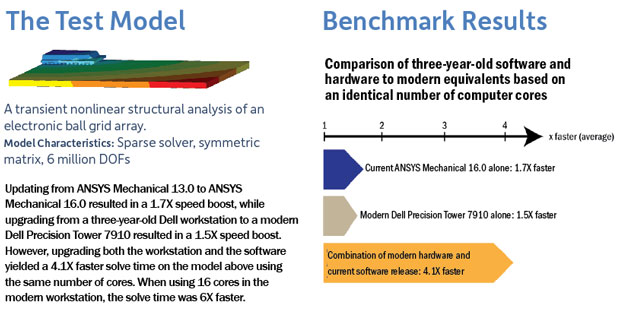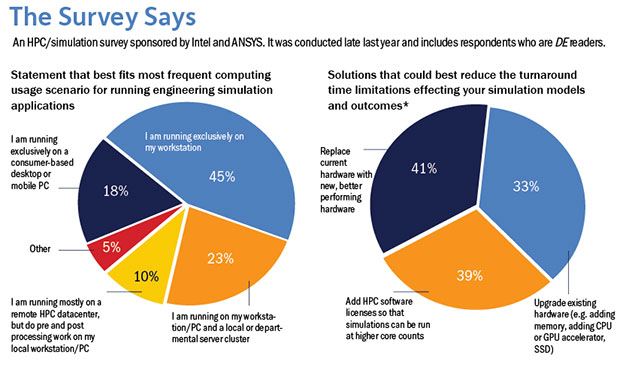
Latest News
October 1, 2015
 Introducing the right product in a timely fashion, free of quality issues, remains the secret to success regardless of industry and despite the complexities of today’s global competition. Simulation software is increasingly recognized as a critical asset for producing such optimal and reliable product designs. However, many organizations aren’t realizing the full benefits of simulation, in part because outdated workstation hardware and software is still too prevalent among engineering teams.
Introducing the right product in a timely fashion, free of quality issues, remains the secret to success regardless of industry and despite the complexities of today’s global competition. Simulation software is increasingly recognized as a critical asset for producing such optimal and reliable product designs. However, many organizations aren’t realizing the full benefits of simulation, in part because outdated workstation hardware and software is still too prevalent among engineering teams.
Build a Strong Computing Foundation
Engineering organizations are stuck in a simulation rut for a variety of reasons. Some are saddled with consumer PCs or underpowered workstations that simply don’t have the muscle to run large simulations or accommodate high-fidelity multiphysics models effectively. Without an adequate computing foundation, complex simulations can drag on for hours, maybe even days, swallowing up limited processing power, consuming precious development hours and wreaking havoc with project deadlines. As a result, engineering organizations often choose to scale back the number of variations they simulate or reduce the scope of the problem they’re exploring, which runs counter to their mission of advancing product designs.
Beyond hardware limitations, there are other factors hindering more widespread use of simulation — even within the same organizations that recognize its potential for design transformation. For some, simulation software remains too costly and difficult to master, limiting its use to pockets within engineering as opposed to being established as an enterprise design tool. In addition, many organizations lack expertise in both simulation software and simulation practices. Some don’t have access to on-staff IT personnel who can support the high performance workstations, clusters and servers optimized for the latest simulation software.
Research and Testing
Intel and ANSYS surveyed design engineers to learn more about their use of simulation. The survey showed that 68% of respondents are forced to limit the size and amount of detail in simulation models at least half the time. That might not be surprising when you consider that 18% of respondents are using consumer-based computers to run simulations and 35% are using computing platforms stocked with a single CPU.
Respondents seem to know what they are missing and why. Almost half (47%) said the primary benefit of simulation is producing higher-quality products than their competitors, while 65% cite the time involved in performing simulations as somewhat/very important to expanding the use of simulation in their organization. A benchmarking study sponsored by ANSYS, Intel and Dell, provides the answer. It showed that a 4.1x reduction in simulation run times can be achieved by using the latest Dell Precision workstations and ANSYS software, as opposed to an equivalent three-year-old system and software. By employing more of the modern hardware’s cores, the results show a 6X reduction in simulation run times can be achieved.
Subscribe to our FREE magazine, FREE email newsletters or both!
Latest News
About the Author
DE’s editors contribute news and new product announcements to Digital Engineering.
Press releases may be sent to them via [email protected].







